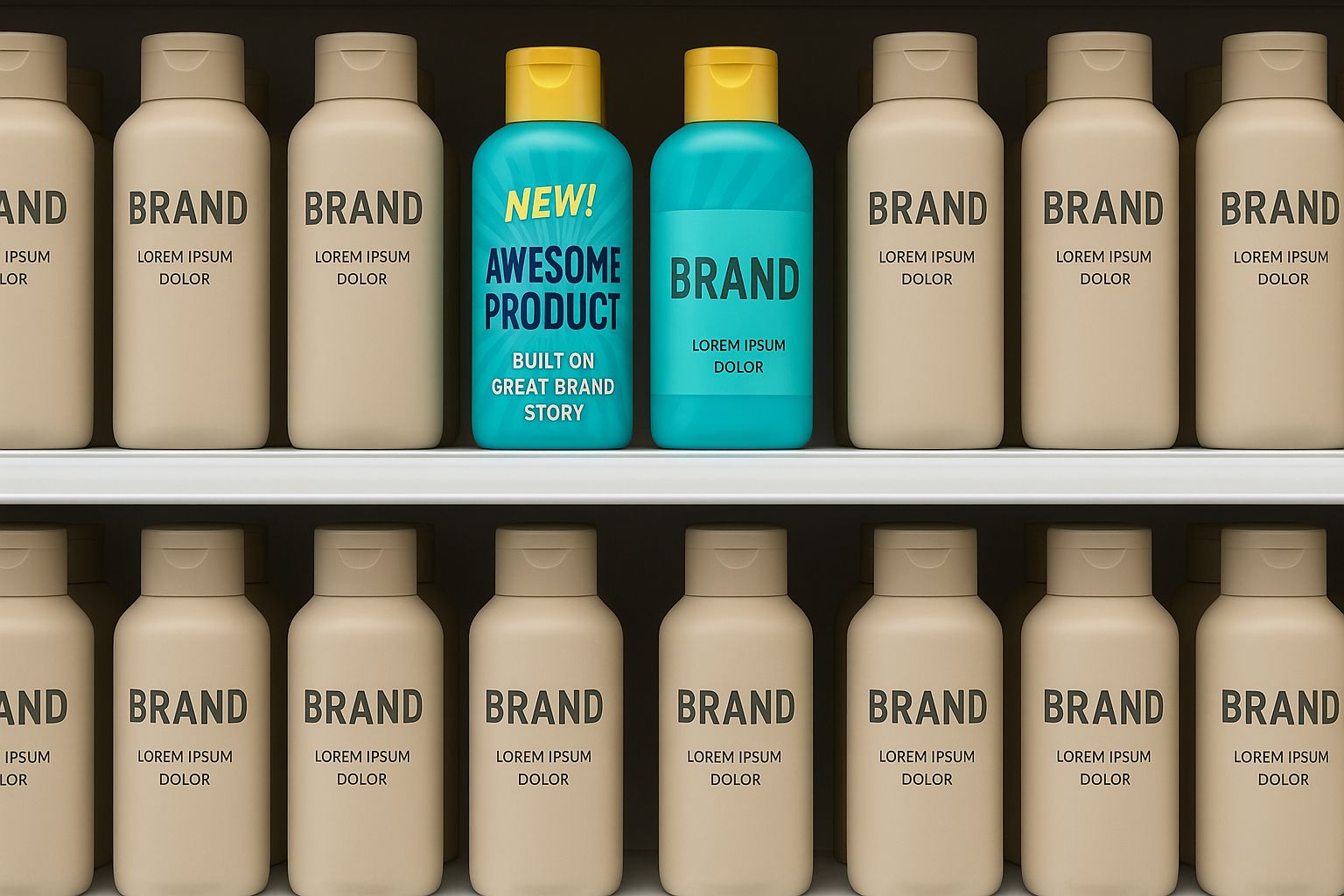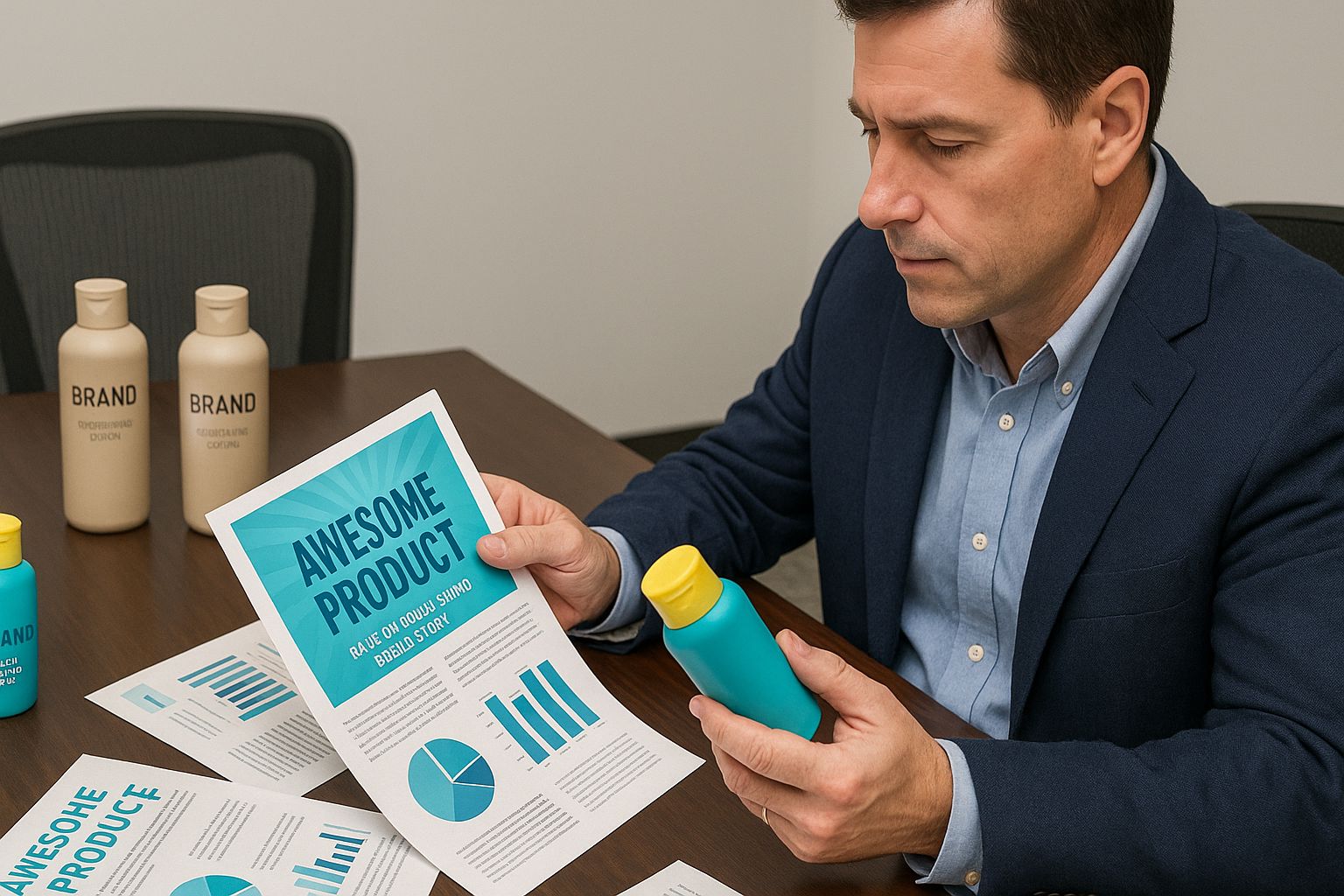
Shelf space is limited. Competition is brutal. And buyers? They’ve heard it all. If you want your CPG product to make it past the pitch and onto retail shelves, you need more than a solid product—you need a brand story that sticks. One that buyers remember, shoppers connect with, and retailers believe will move. In this post, we’ll break down how to build a brand story that does more than sound good—it opens doors.
What a Brand Story Really Is (and Isn’t)
Let’s clear something up: your brand story isn’t just your origin story. It’s not a string of nice-sounding values. And it definitely isn’t just a logo paired with a tagline.
Your brand story is the strategic narrative that ties everything together—your product’s purpose, the problem it solves, and the emotional hook that makes buyers and shoppers care. It’s what gives context to your offering in a way that’s relevant to their world.
Buyers don’t need your life story. They need to know:
That’s the story you need to tell.
The Three Audiences Your Story Has to Reach
Too many CPG founders write their brand story for themselves. But your story has three key audiences, and each one hears it through a different filter:
1. Retail buyers – They want a product that fills a gap, sells fast, and fits their shelf strategy. Your story must show traction, differentiation, and proof of demand.
2. Shoppers – They want to know why your product matters to them. Is it cleaner? Faster? More flavorful? Make it personal.
3. Your own team – They need to be inspired to share the brand consistently across packaging, pitch decks, and shelf talkers.
If your story only speaks to one of these, you're missing the mark—and potentially missing out on retail placement.
What Makes a Story Memorable to Buyers?

A memorable brand story in the CPG space does three things:
1. Connects emotionally – Think less “we use organic ingredients” and more “we created this to solve a problem families face every day.” When done well, storytelling taps into brain activity in a way facts alone can’t.
2. Establishes credibility – Real data, real reviews, and proof of velocity. That credibility helps buyers feel confident in your pitch.
3. Leads with the shopper – Your story isn’t about you. It’s about the impact your product has when it lands in someone’s cart.
Pro tip: If a buyer can repeat your core story in one or two sentences to their boss or team, you’ve done your job.
Packaging Is Part of the Story
Your brand story doesn’t live only on your About page. It shows up in the font you choose, the packaging claims you make, and even the way your UPC is placed. Shoppers don’t read—they skim. And retail buyers know it.
According to McKinsey, 60–70% of in-store purchase decisions are made at the shelf, often influenced heavily by packaging design.
So, ask yourself:
If not, tighten it up. Confused shoppers don’t convert. And skeptical buyers don’t write purchase orders.
Don’t Just Tell the Story—Prove It
It’s not enough to say you’re different. You have to show how you're different and why it matters.
Use:
RangeMe suggests that successful retail pitch decks don’t just include a story—they anchor it with credibility, proof of traction, and clear benefits for the retailer.
But avoid turning your pitch into a memoir. Your story should be purposeful, polished, and buyer-facing. It's a sales tool, not a scrapbook.
Build Once, Tell Often
Your brand story isn’t a one-and-done asset. It should live in:
Consistency doesn’t mean saying the exact same thing every time. It means your core message—the heart of your story—always comes through, whether you’re in a buyer meeting or talking to a shopper on Instagram.
Ready to Refine Your CPG Brand Story?
If you're preparing for retail meetings or just starting to build a narrative that resonates, ensure your story speaks to both the buyer and the shopper. A good story gets attention. A great one gets shelf space.
Need help crafting a brand story that sells? Contact us below to schedule a quick consult. We’ll find the hook, shape the message, and get you ready for that buyer meeting.
Keep the momentum going. Head back to our News page for more hands-on strategies that support your goals.